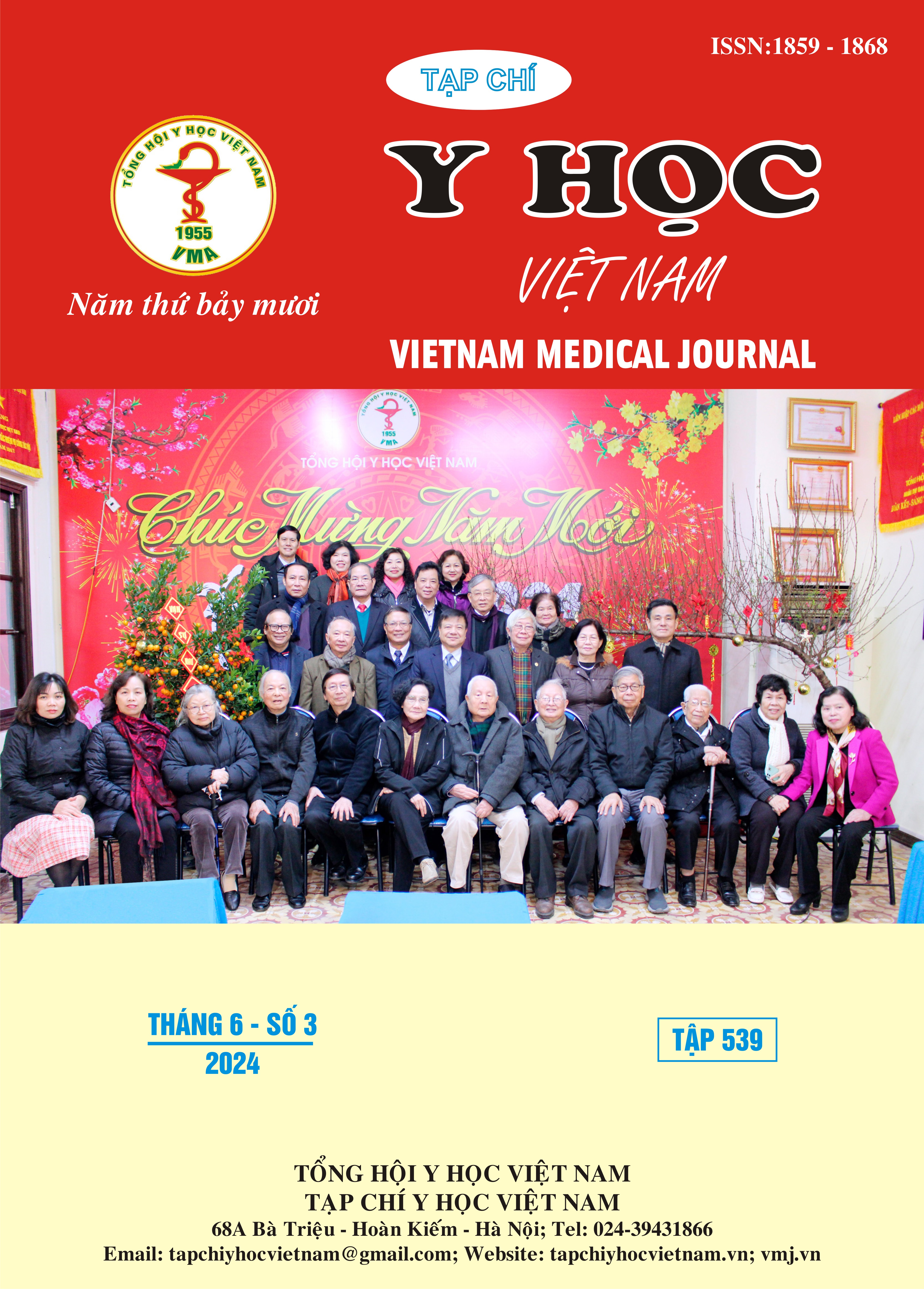RESEARCHING ON THE EFFECTS OF TREATMENT OF KNEE OSTEOARTHRITIS OF PHONG THAP DAN TABLETS COMBINED WITH ELECTRO-ACUPUNCTURE
Main Article Content
Abstract
Objective: Describe the clinical and paraclinical characteristics of patients with knee osteoarthritis. Evaluate the results of pain relief and improving range of motion of Phong thap dan tablets combined with electroacupuncture on patients with knee osteoarthritis. Subjects and methods: 60 patients aged 40 years and older, regardless of gender or occupation, were diagnosed with knee osteoarthritis according to modern medicine and kidney failure cum rheumatism according to traditional medicine. Research group (30 patients): took Phong thap dan tablets, 12 tablets a day, divided into 3 times, 4 tablets each time 30 minutes after eating; Combine electro-acupuncture in the affected knee joint area once a day. Control group (30 patients): take Didicera product, 03 packets per day, divided into 3 times, each time take 01 packet 30 minutes after eating; Combine electro-acupuncture in the affected knee joint area once a day. Results: The average VAS pain score is about 5.5, the level of damage to knee joint function according to the Lequesne scale ranges from very severe to severe, mainly stage 2 on X-ray. After 28 days of treatment, the classification of knee flexion range of motion in both groups improved compared to the time before treatment, no longer limiting moderate and severe knee flexion range of motion. The research group had 02 patients with symptoms of constipation, while the control group had 02 patients with abdominal bloating during treatment. Conclusion: The method of combining taking Phong thap dan tablets and electro-acupuncture is a safe method, effective in treating knee osteoarthritis by reducing pain and improving knee joint mobility.
Article Details
Keywords
Traditional medicine, knee osteoarthritis, Phong thap dan
References
2. Y tông kim giám quyển 12 ngoại khoa tâm pháp tổng quyết. Nhà xuất bản Khoa học và công nghệ Y học cổ truyền Trung Quốc, 2017: 840
3. Fietze I, Laharnar N, Obst A, Ewert R, Felix SB, Garcia C, Gläser S, Glos M, Schmidt CO, Stubbe B, Völzke H, Zimmermann S, Penzel T (2019). Prevalence and association analysis of obstructive sleep apnea with gender and age differences - Results of SHIP-Trend. J Sleep Res. Oct;28(5):e12770
4. Kong LD, Yang C, Ge F, Wang HD, Guo YS (2004), “A Chinese herbal medicine Ermiao wan reduces serum uric acid level and inhibits liver xanthine dehydrogenase and xanthine oxidase in mice”, Journal of Ethnopharmacology, 93 pp.325-330
5. Neogi Tuhina, Jansen Tim L. Th A., Dalbeth Nicola et al (2015), 2015 Gout classification criteria: an American College of Rheumatology/European League Against Rheumatism collaborative initiative, Annals of the Rheumatic Diseases, 74(10).p1789
6. 中华人民共和国卫生部 (1995).《中药新药临床研究指导原则》第二辑. 中药新药治疗痛风的临床研究指导,179-183


